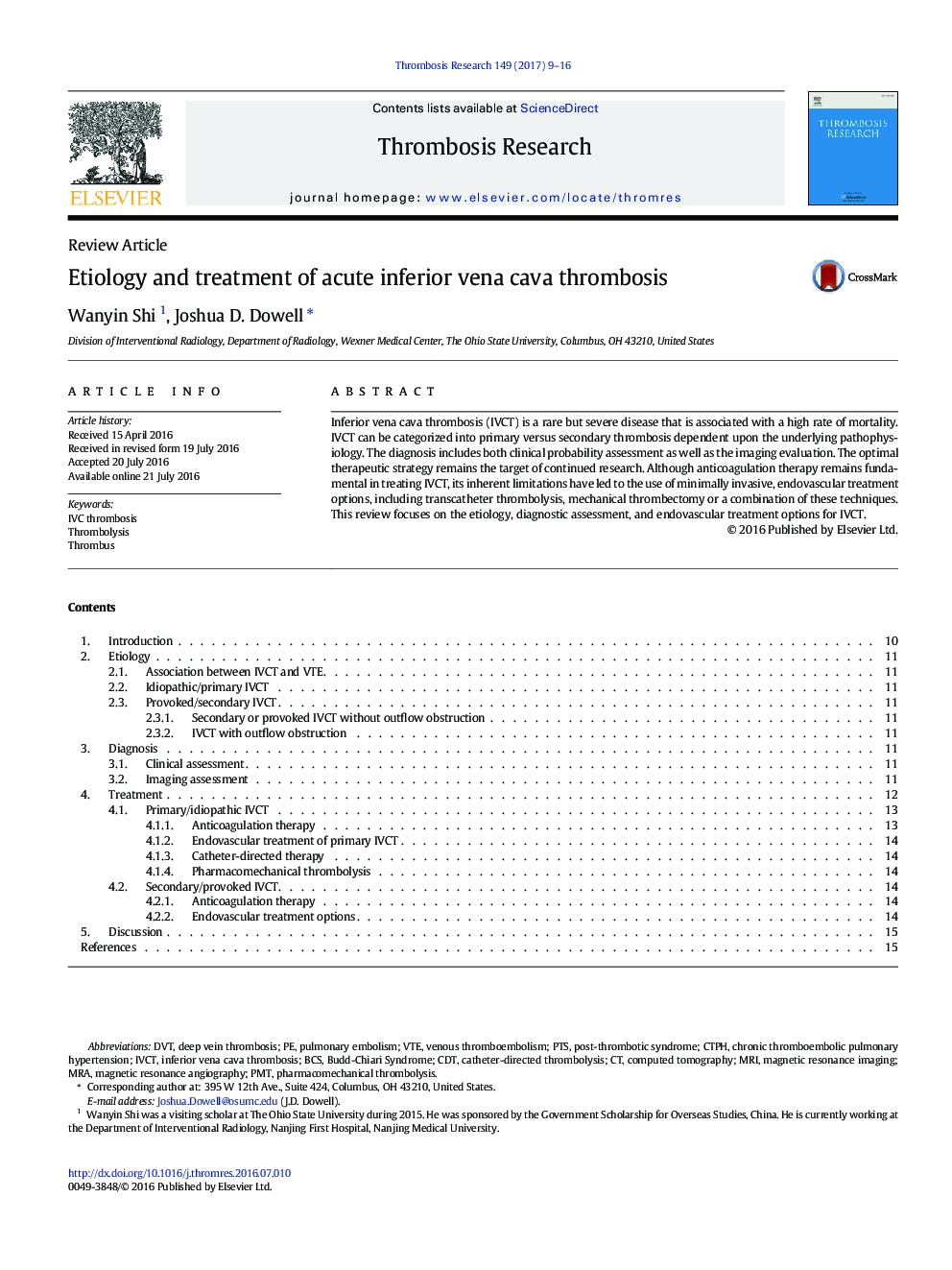| Article ID | Journal | Published Year | Pages | File Type |
|---|---|---|---|---|
| 5621934 | Thrombosis Research | 2017 | 8 Pages |
â¢Inferior vena cava thrombosis (IVCT) is a severe disease with high mortality.â¢Cross-sectional imaging is critical in making the diagnosis of IVCT.â¢Anticoagulation remains an important component of treatment.â¢Transcatheter thrombolysis and thrombectomy are growing treatment techniques.
Inferior vena cava thrombosis (IVCT) is a rare but severe disease that is associated with a high rate of mortality. IVCT can be categorized into primary versus secondary thrombosis dependent upon the underlying pathophysiology. The diagnosis includes both clinical probability assessment as well as the imaging evaluation. The optimal therapeutic strategy remains the target of continued research. Although anticoagulation therapy remains fundamental in treating IVCT, its inherent limitations have led to the use of minimally invasive, endovascular treatment options, including transcatheter thrombolysis, mechanical thrombectomy or a combination of these techniques. This review focuses on the etiology, diagnostic assessment, and endovascular treatment options for IVCT.
Graphical abstractDownload high-res image (255KB)Download full-size image
